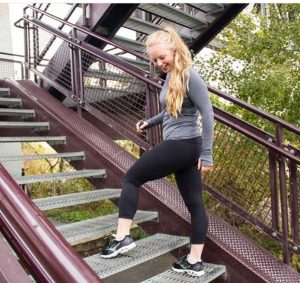
With race season in full swing, it seems our bodies are forever “tight”. But what does that really mean and how do we fix it? Does having a tight muscle negatively affect performance?
WHAT DO JOINTS HAVE TO DO WITH IT
Generally when we feel “tight”, we assume stretching will make it go away. However, this is usually a temporary fix to a greater problem – often with structural origins. By this I mean, instead of only looking at the tight muscle, we should be shifting our attention to what could be pulling on that muscle (joints above and below the muscle) to make it so tight. For example, perhaps your hamstrings are tight. Sitting and stretching your hamstrings for 20 minutes every evening is going to have very little impact on those tight hamstrings if the joint capsule of your hip is compromised.
Why? Since we know your hamstring muscles attaches onto the bones in your hips, if your hips are “out of line”, they can pull on those hamstrings creating excessive tension. Now when you go to stretch those hamstrings, we are really just stretching an already stretched out muscle, when what we need to do is relieve the tension at the hip.
MUSCLE TENSION IS A GOOD THING??
In some instances, having some degree of tension is actually a GOOD thing!
When our muscle contract, our “motor units” get pulled together to shorten the muscle. Think of motor units like a row boat. Imagine 2 row boats only a foot apart, one behind the other. The person at the back of the front boat could grab the hand of the person at the front of the back boat and pull the two boats together. This is how our muscle shortens. Now, imagine those boats are 5 feet apart – it’s going to take some time for the people in those boats to get close enough to lock hands and pull each other together.
In your muscles, there are MILLIONS of these little boats. All lined up end to end, with little spaces in between. If you are too flexible, those boats are too far apart to contract quickly, resulting in a decrease in power output. When trying to increase power, some degree of tension must be present (boats have to be close enough) so that a fast contraction (boats pulling together) can take place.
CONCLUSION
When you find specific muscles are constantly tight, consider investigating the joints above and below the tight muscle for optimal movement.
Do you have full pain free range of motion in those joints? Do they click and grind or move smoothly? These are all potential signs of a compromised joint, which could be creating constant tension on the muscles that attach to it. However, if you are not experiencing pain, and your joints are moving smoothly, perhaps that tight muscle is not as much of an issue and you may think. That being said, our bodies are extremely complex, with many joints and muscles acting on numerous other joints and muscles.
For that reason, self diagnosis can be a dangerous game and therefore it is recommended to book in with your local FRC® practitioner to get a full functional range assessment done, and get on track for a strong and successful season of racing!
To read an article on Dynamic Warm up for Runners
Read more about author & coach Amanda Regnier, MSc. C.S.C.S. at: https://www.runningwithregnier.com